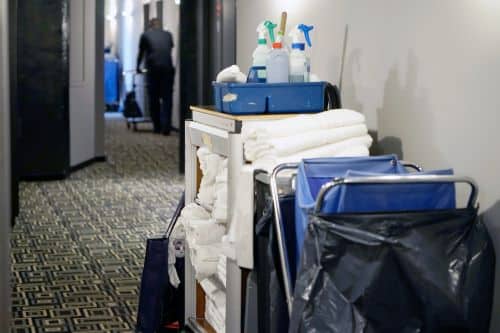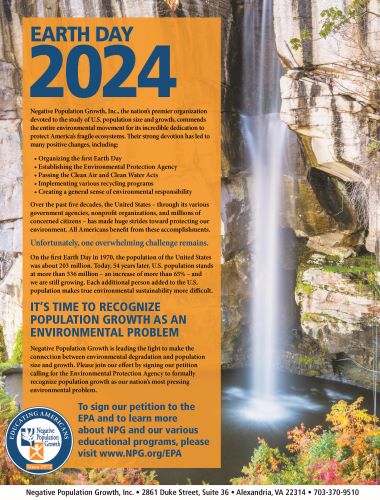
Hotels Say They Can’t Find US-Born Workers; Statistics Show They Don’t Try Hard Enough
- Edwin S. Rubenstein
- April 23, 2024
- Forum Papers
- Forum Paper
- 0 Comments
Click here for a downloadable, printable PDF version.
The third in a three-part series.
An NPG Forum Paper
by Edwin S. Rubenstein
April 2024
In this third and final entry to NPG’s special series on the various businesses that continue to profit from ongoing illegal immigration we examine the hospitality industry. Recent headlines reveal some serious problems:
- A new hotel in Salt Lake City goes on a recruiting blitz for entry-level workers in order to staffup. The number of applicants who respond: zero.
- A lodging group in Maine closes two of its inns because it simply can’t find enough workers to keep the properties running.
- Several New York City hotels replace room service with food-delivery apps, citing staff shortages.
Guests are starting to notice the impact on everything, from longer lines and wait times at front desk check-ins to fewer food and beverage outlets. Industry executives are calling on the government to take action:
“We are at a critical moment for our industry,” says Chip Rogers, president and CEO of the American Hotel and Lodging Association (AHLA). For years Rogers and other hoteliers have called for “immigration reform,” noting that “the domestic labor market alone cannot meet our workforce needs.”1
The US Labor Department recently estimated that the leisure and hospitality industry has roughly 1 million job openings, up from about 600,000 positions in 2015 and 350,000 in 2009.2
Immigrants make up 31% of the industry’s workforce, although they make up just over 13% of the US population, according to the Deloitte Travel and Hospitality Outlook.3
But a shortage of qualified Americans? Really?
REALITY CHECK
Nearly 15 million Americans work in tourism and hospitality, according to US Labor Department estimates. This category is the fifth-largest industry in America, covering hotels, theme parks, and restaurants. About 8 million are specifically in the hotel business.4
But the AHLA says that 8 million is not enough. The hotel association wants to address the (alleged) labor shortage by making it easier for immigrants to work here.
Guests are starting to notice the impact on everything, from longer lines and wait times at front desk check-ins to fewer food and beverage outlets. Industry executives are calling on the government to take action:
The AHLA wants Congress to expand the H-2B visa program. Created in 1986 by the Immigration Reform and Control Act (IRCA), the visa is for foreign nationals “…coming temporarily to the United States to perform other temporary services or labor, if unemployed persons capable of performing such services or labor cannot be found in this country.”5
Many H-2B employees return year-after-year, supposedly providing “critical staffing relief” for small seasonal business and resort hotels.6
The number of H-2B visas issued is currently “capped” at 66,000 per year, but AHLA says it should be closer to 90,000 “to meet demand.” A few years ago, under pressure from liberal politicians like Maryland Governor Larry Hogan, federal lawmakers agreed to a temporary increase to 96,000.7
The H-2B visa program is controversial – and for good reason. Current visa rules make it easy for employers to “game the system” and bypass US-born workers willing and able to fill seasonal jobs:
VISA MYTH: Employers must pay their H-2Bs and American workers the same premium wage dictated by the Department of Labor (DOL).
FACT: DOL certification data shows that the H-2B program’s prevailing wage rules allow, in the vast majority of cases, certification of temporary workers at wages well below state and national averages…Continue reading the full Forum paper by clicking here.
Your gift helps publish and distribute materials like this.
Ed Rubenstein, president of ESR Research, is an experienced business researcher, financial analyst, and economics journalist. He has written extensively on federal tax policy, government waste, the Reagan legacy, and – most recently – on immigration. He is the author of two books: The Right Data (1994) and From the Empire State to the Vampire State: New York in a Downward Transition (with Herbert London). His essays on public policy have appeared in The Wall Street Journal, The New York Times, Harvard Business Review, Investor’s Business Daily, Newsday, and National Review. His TV appearances include Firing Line, Bill Moyers, McNeil-Lehr, CNBC, and Debates-Debates. Mr. Rubenstein has a B.A. from Johns Hopkins and a graduate degree in economics from Columbia University.


